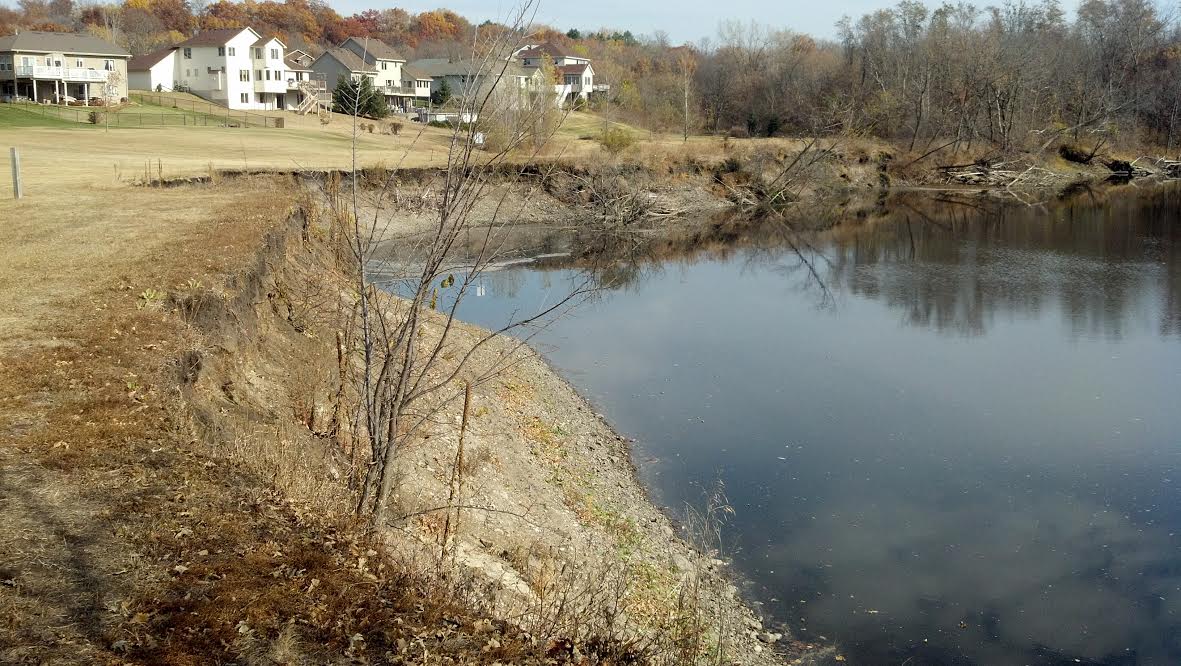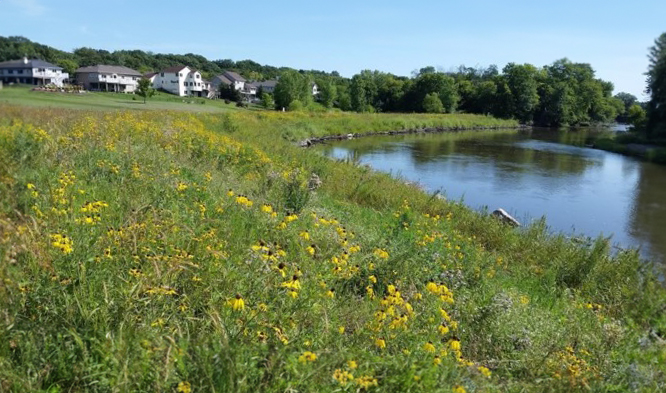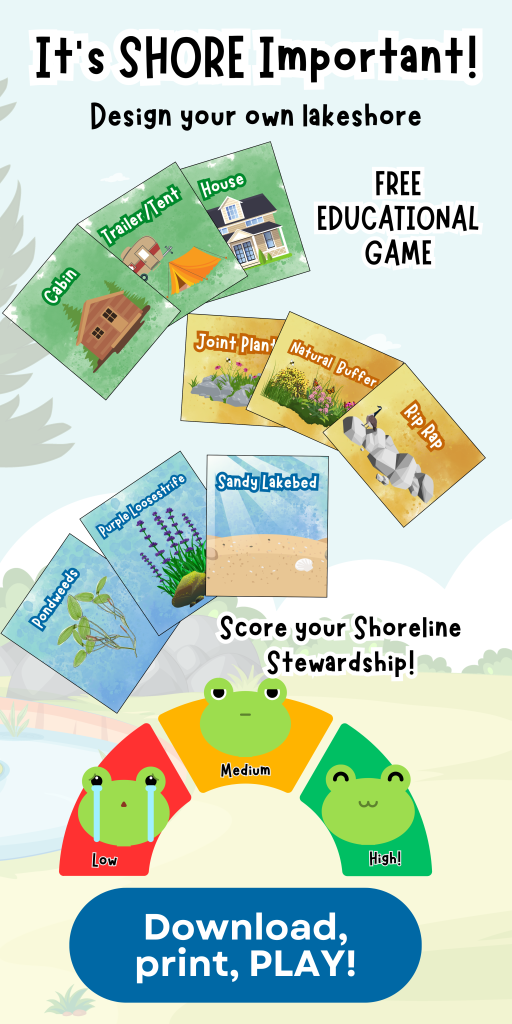The Minnesota Natural Shoreline Partnership aims to reshape perceptions, attitudes, and policies around lakeshore development and stewardship, inspiring the dedication and action needed to protect and restore natural shorelines for the benefit of people, fish & wildlife habitat, recreation, lake health, and water quality.
Don’t Mow – Let it GROW!
Mowed turf shorelines let 7–9 times more pollutants enter lakes than natural vegetation, fueling algal blooms, excess aquatic growth, and declining water quality. This loss of natural habitat also threatens fish, loons, frogs, butterflies, and the scenic beauty that defines Minnesota’s lakes.
Get Rid of Rip-Rap
Erosion control with rip rap (large shoreline stones) harms natural habitats, reduces biodiversity, and can worsen erosion by increasing wave energy. Natural shoreline buffers better protect water quality, wildlife habitats, and healthy aquatic plant growth.
Underwater Forests
Aquatic plants are essential for Minnesota’s lakes and rivers, providing habitat and food for fish and wildlife while improving water quality by absorbing nutrients and stabilizing sediments. Next time a “weed” brushes your toes while swimming, remember it’s helping sustain Minnesota’s fisheries.
Trouble By the Water – MN Public Radio
- Unchecked development, lax regulation push Minnesota lakeshores to the edge
- ‘Quit mowing’: Turning Minnesota lake homeowners into shoreline stewards, one lawn at a time
- In NW Wisconsin, a county finds paying homeowners to keep shorelines natural pays off
- 10 key data points and graphs about loss of shoreline on Minnesota’s lakes
- On Cross Lake, loons make the case for protecting Minnesota’s wild shores
- Native plants, lots of patience: How a Stearns County couple restored a damaged lakeshore
- In new U study, questions resurface over wakesurfing’s impact on Minnesota lakes
- Across northern Minnesota’s pristine lake country, mercury contamination is growing
- Minnesota is armoring its shorelines with rocks, but lakes are paying a price
- Reporter’s Notebook: Covering the impact of rock riprap on Minnesota lakes
- Beyond the surface: Scientists study how wake boats affect lake health




Resources:
Research and Water Quality Assessments
Minnesota’s Vanishing Shorelines: Addressing the challenges of eroding shorelines and the importance of restoration.
Climate trends affecting lakes and rivers : Understanding how climate change impacts water levels, temperatures, and ecosystem health
Watershed Health Assessment: Evaluating the health of watersheds that contribute to the overall health of lakes and rivers.
Minnesota MPCA impaired waters map: A tool to identify bodies of water that are classified as impaired by pollution or other issues by the Minnesota Pollution Control Agency.
Permitting and Funding Info
Do I Need a Permit?: Information on when a permit is required for shoreline or water-related projects in Minnesota.
BWSR Climate Resiliency – Identifying Programs and Funding
Land Protection Grant Opportunities
Preserving your shoreline for future generations: Already have a natural shoreline? read this webpage which offers guidance on conservation easements as a means to protect and maintain natural shorelines.
Shoreline Restoration Planning
What to ask your lakeshore landscape contractor: Key questions to ensure your contractor follows best practices for shoreline restoration.
Native Plants for Shoreline: A guide to selecting the right native plants to support shoreline health.
Minnesota Native Plant Encyclopedia: A resource for identifying native plant species suited to different environments.
MN DNR Restore Your Shore Page: A comprehensive guide on how to restore and maintain natural shorelines.
Shoreland Guide to Lake Stewardship: $10 guidebook on how to restore your shoreline property to catch up to 90% of runoff
Minnesota Natural Shoreline Partners
- Blue Thumb Partners
- Board of Water and Soil Resources (BWSR)
- Carnelian, Marine, St. Croix Watershed District
- Comfort Lake Forest Lake Watershed District
- Freshwater Society
- Leech Lake Band of Ojibwe Environmental Land Department
- Minnesota Coalition of Lake Associations (MNCOLA)
- Minnesota Lakes and Rivers (MLR)
- Douglas County Lakes Association
- Metro Blooms
- Northern Waters Land Trust
- Washington Conservation District
- East Metro Water Resource Education Program
- Stearns County Soil and Water Conservation District (SWCD)
- Lake County Soil and Water Conservation District (SWCD)
- Cass County Environmental Services
- Water Resource Center – University of Minnesota Extension
- Lower St. Croix Watershed Partnership
- Department of Natural Resource – Lake Ecology




